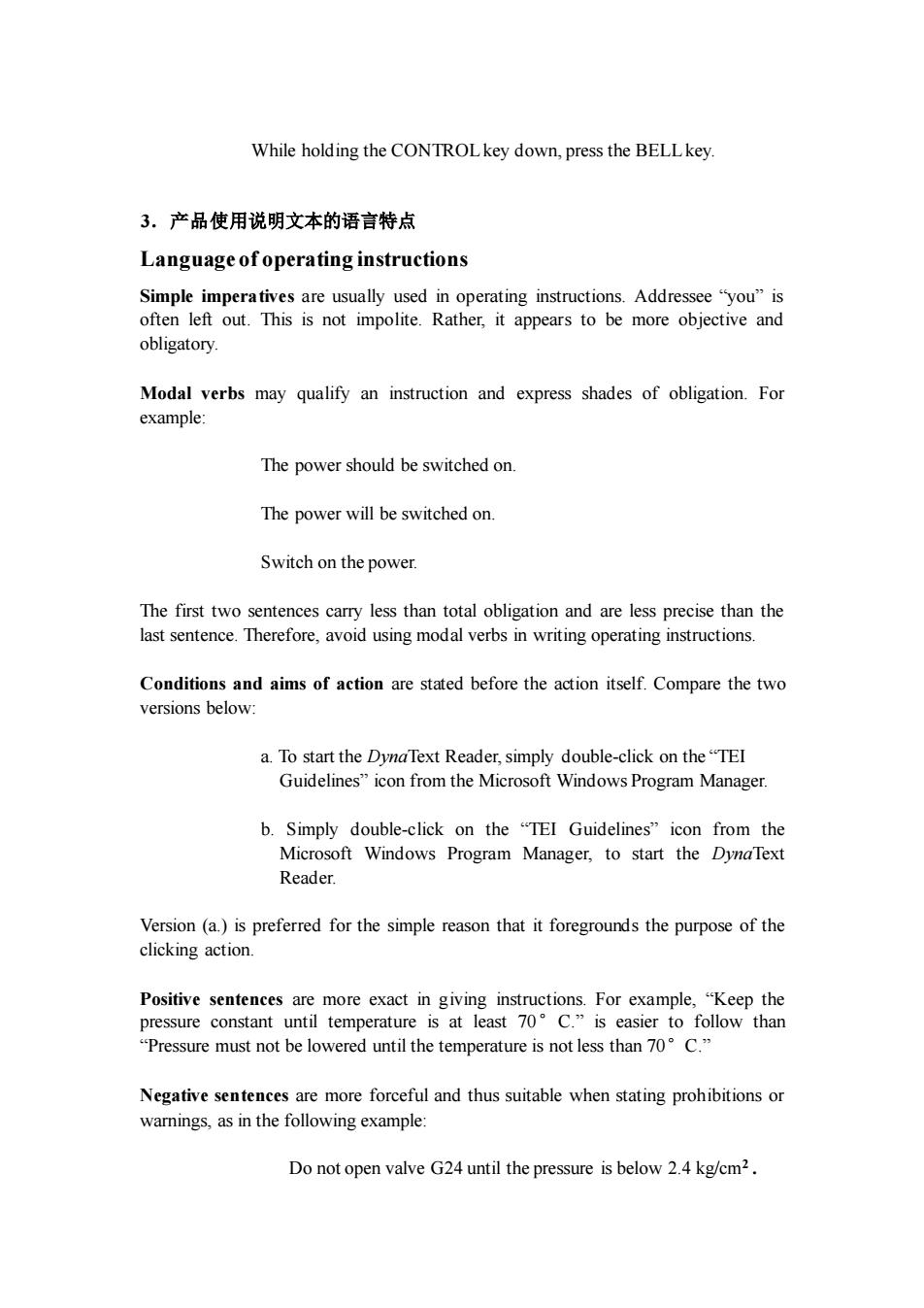正在加载图片...

While holding the CONTROL key down,press the BELL key. 3.产品使用说明文本的语言特点 Language of operating instructions Simple imperatives are usually used in operating instructions.Addressee "you"is often left out.This is not impolite.Rather,it appears to be more objective and obligatory. Modal verbs may qualify an instruction and express shades of obligation.For example: The power should be switched on. The power will be switched on. Switch on the power. The first two sentences carry less than total obligation and are less precise than the last sentence.Therefore,avoid using modal verbs in writing operating instructions. Conditions and aims of action are stated before the action itself.Compare the two versions below: a.To start the Dyna Text Reader,simply double-click on the"TEI Guidelines"icon from the Microsoft Windows Program Manager. b.Simply double-click on the "TEI Guidelines"icon from the Microsoft Windows Program Manager,to start the DynaText Reader. Version(a.)is preferred for the simple reason that it foregrounds the purpose of the clicking action. Positive sentences are more exact in giving instructions.For example,"Keep the pressure constant until temperature is at least 70C."is easier to follow than "Pressure must not be lowered until the temperature is not less than 70C." Negative sentences are more forceful and thus suitable when stating prohibitions or warnings,as in the following example: Do not open valve G24 until the pressure is below 2.4 kg/cm2.While holding the CONTROL key down, press the BELL key. 3.产品使用说明文本的语言特点 Language of operating instructions Simple imperatives are usually used in operating instructions. Addressee “you” is often left out. This is not impolite. Rather, it appears to be more objective and obligatory. Modal verbs may qualify an instruction and express shades of obligation. For example: The power should be switched on. The power will be switched on. Switch on the power. The first two sentences carry less than total obligation and are less precise than the last sentence. Therefore, avoid using modal verbs in writing operating instructions. Conditions and aims of action are stated before the action itself. Compare the two versions below: a. To start the DynaText Reader, simply double-click on the “TEI Guidelines” icon from the Microsoft Windows Program Manager. b. Simply double-click on the “TEI Guidelines” icon from the Microsoft Windows Program Manager, to start the DynaText Reader. Version (a.) is preferred for the simple reason that it foregrounds the purpose of the clicking action. Positive sentences are more exact in giving instructions. For example, “Keep the pressure constant until temperature is at least 70°C.” is easier to follow than “Pressure must not be lowered until the temperature is not less than 70°C.” Negative sentences are more forceful and thus suitable when stating prohibitions or warnings, as in the following example: Do not open valve G24 until the pressure is below 2.4 kg/cm2